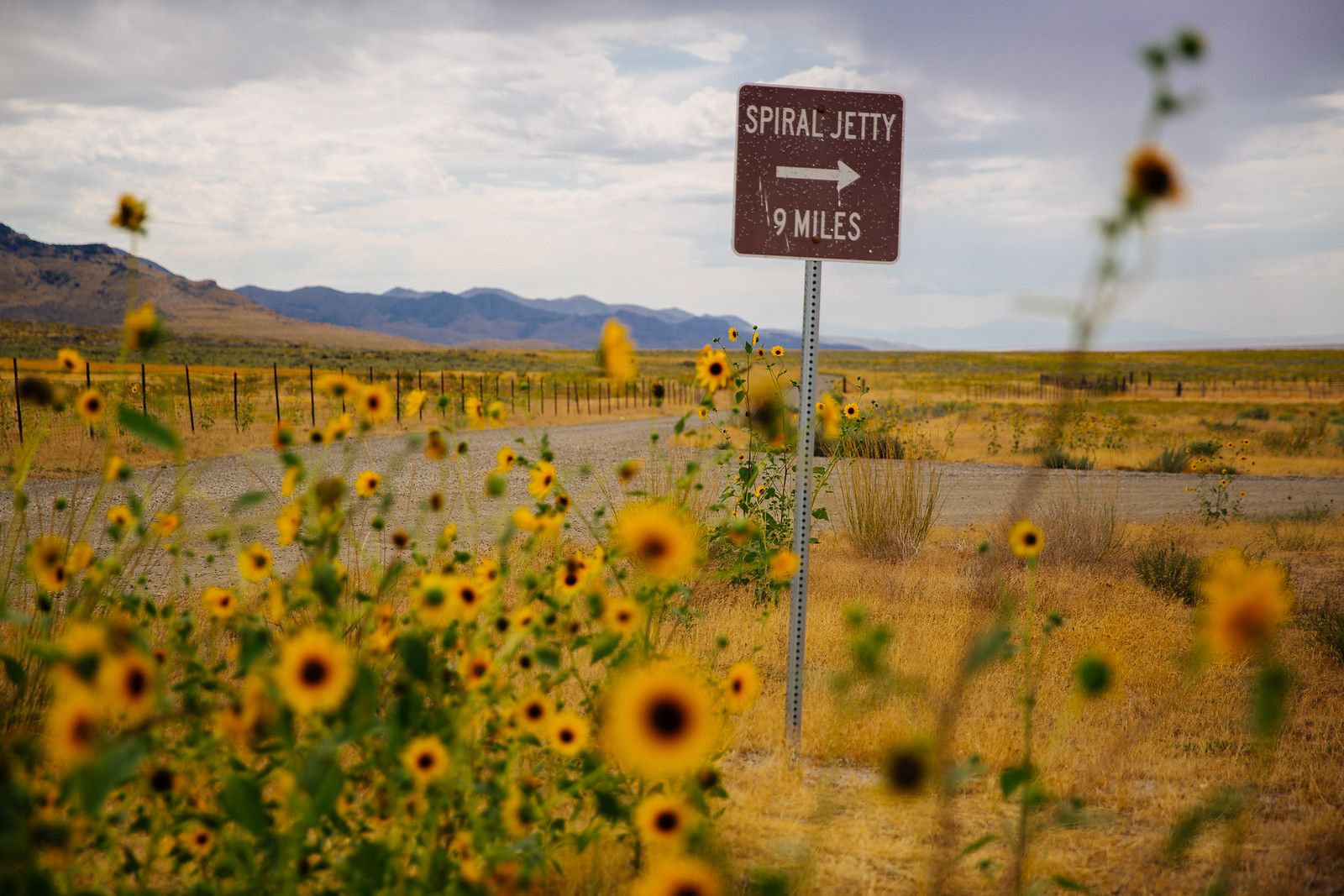
On a recent, intense, two-day trip to Park City, Utah, Mitch and I made an impromptu decision to include a visit to Robert Smithson’s work of land art known as the Spiral Jetty. Possibly not the methodical planning necessary to visit such a remote spot, but we made it there and back again without incident — just barely. I would advise bringing copious amounts of water, phone chargers of course, snacks, and maybe a shade umbrella if you visit in summer, or at the very least a broad-brimmed hat.


Even with all these preparations, I cannot guarantee that you won’t feel a heightened vulnerability in such an extreme landscape, which in our case shifted into a wildly giddy euphoria about the time the tires were triumphantly kicking up the ancient lake dust as we headed back to Salt Lake City, about a two-hour drive away. Yes, it’s a bit of an ordeal, but there’s no other place on earth quite like it.
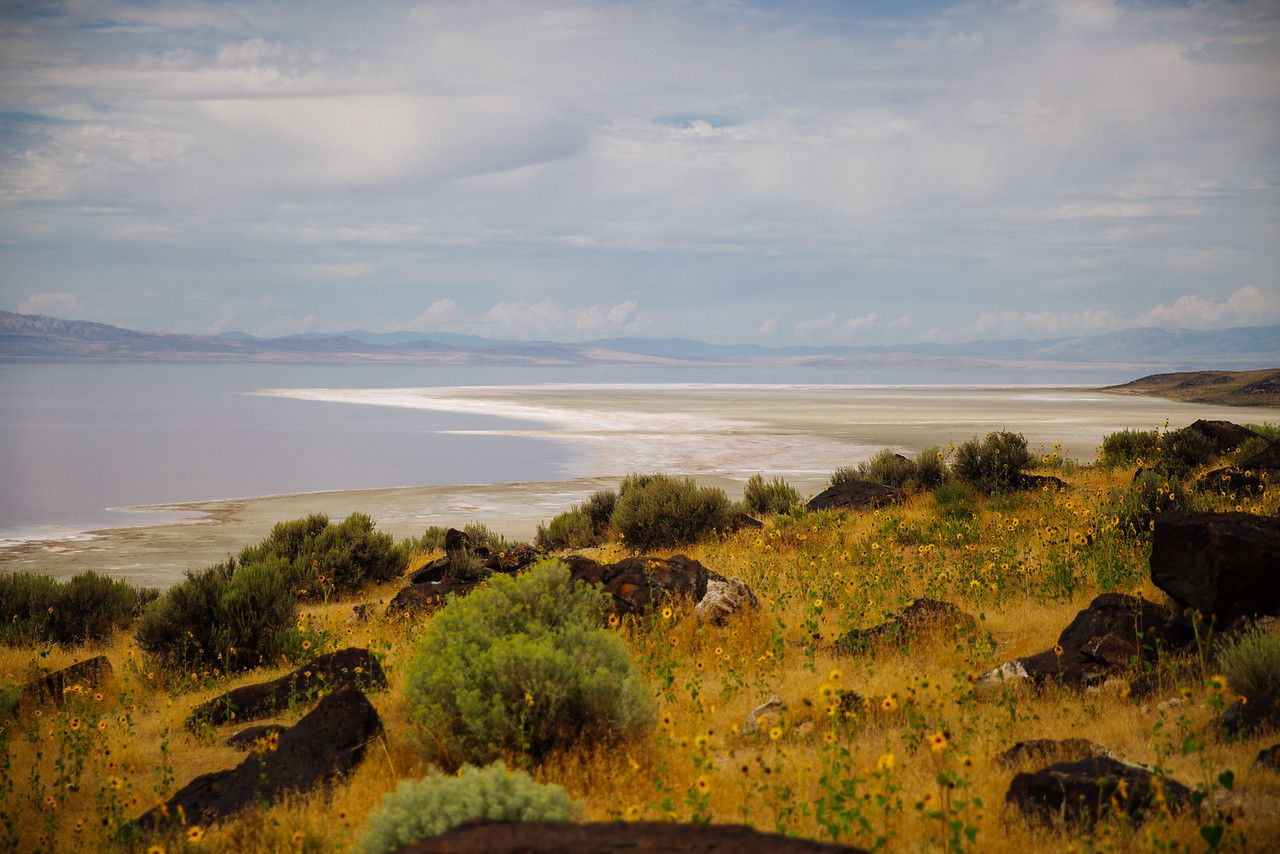
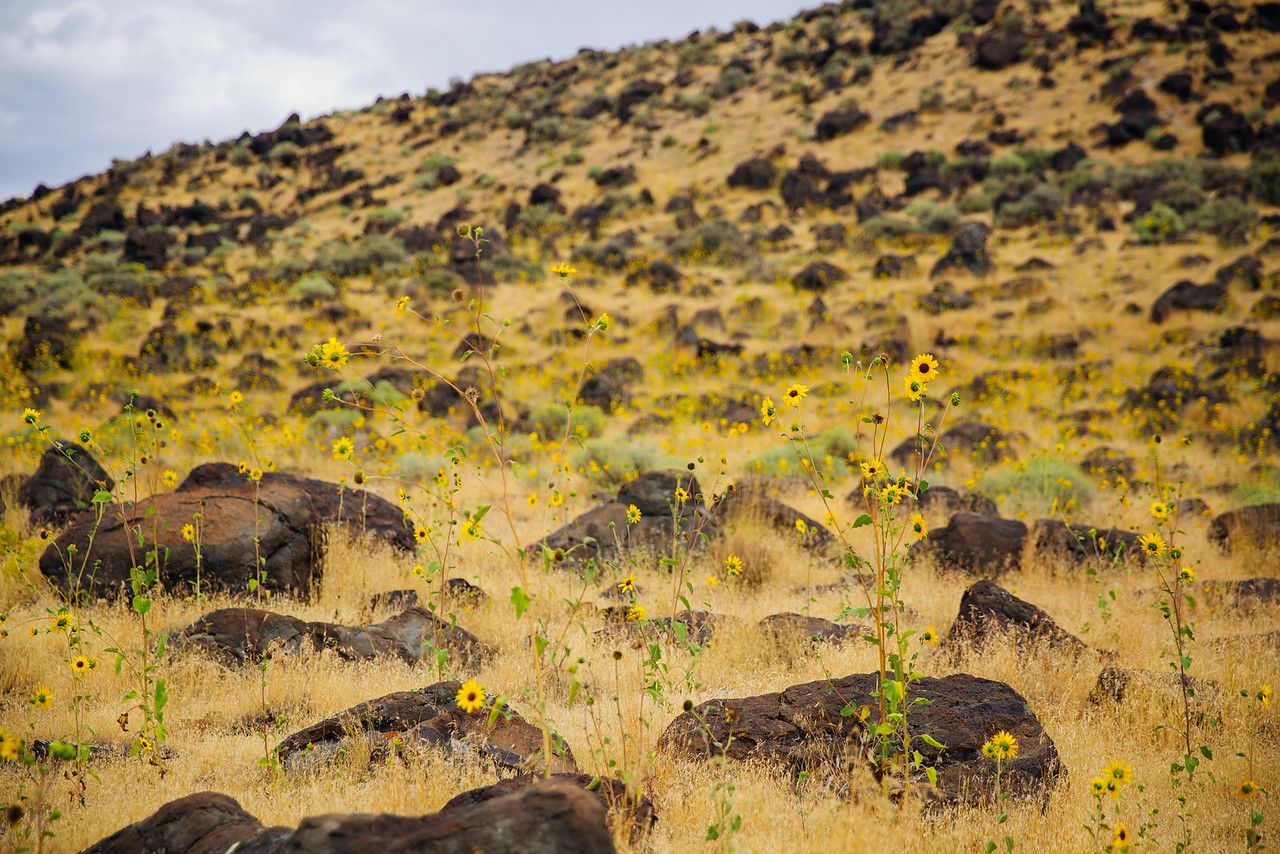
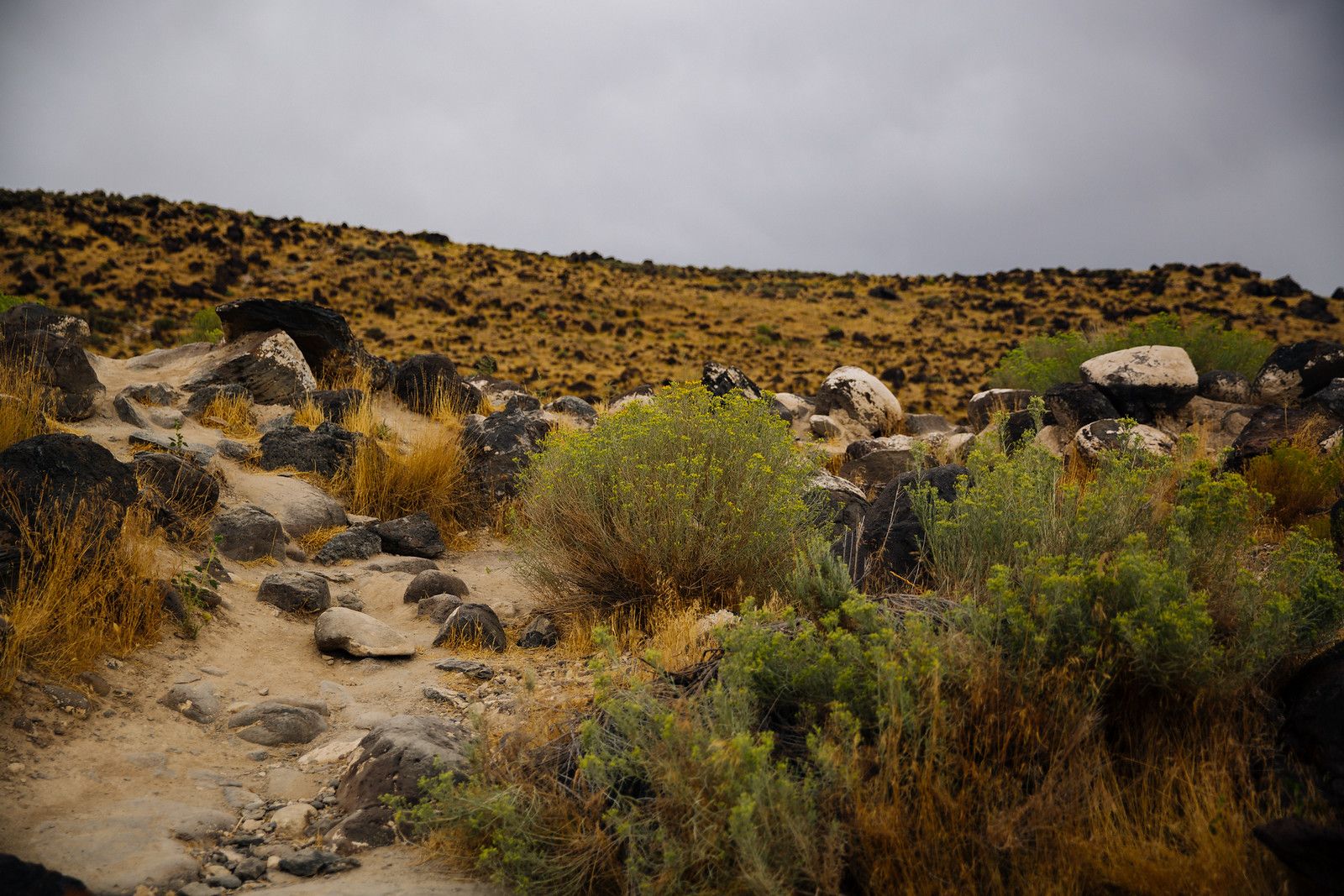
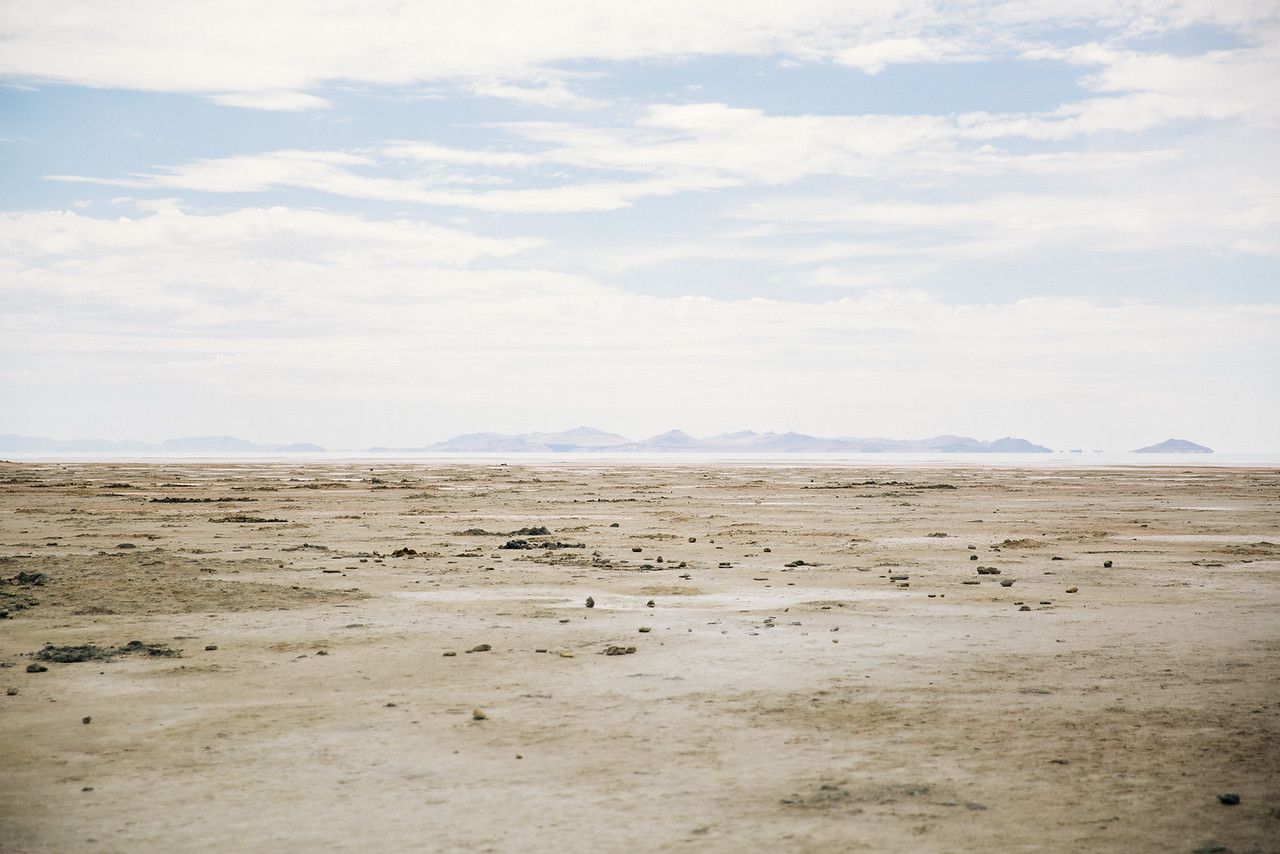
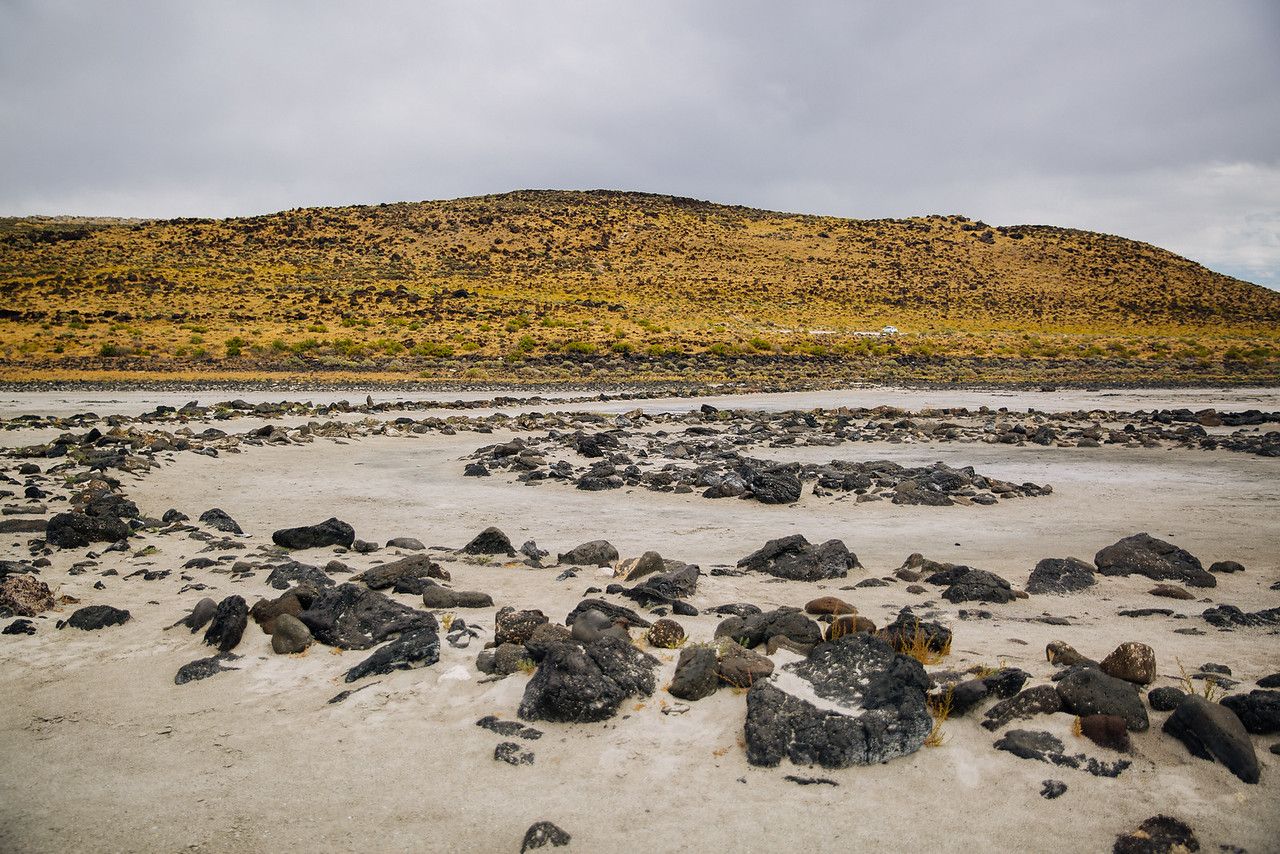
This is the hill Mitch climbed, when I lost sight of him briefly and felt like an astronaut alone on a new planet
The pioneering practitioners of earthworks, or land art, and possibly the most well-known, are the holy trinity comprised of American artists Robert Smithson, Michael Heizer, and Walter de Maria. Of the three only Michael Heizer is alive and working, albeit with a broken body that has paid the price for his choice of site and medium; his mile-wide work City, begun in 1972 in Nevada, may possibly be open in 2020. Prior to this trip, other than coming up in casual conversation (with art history majors), I knew very little of their work, but as it happens I’ve been immersed in Nova’s The Planets, with its detailed explanations as to why, say, Mars lost its early oceans and congenial atmosphere and therefore its shot at life while we flourished, so a visit to Utah could not have been better timed. I was primed and ready to see a landscape that simultaneously looked billions of years old and also like it was birthed yesterday.

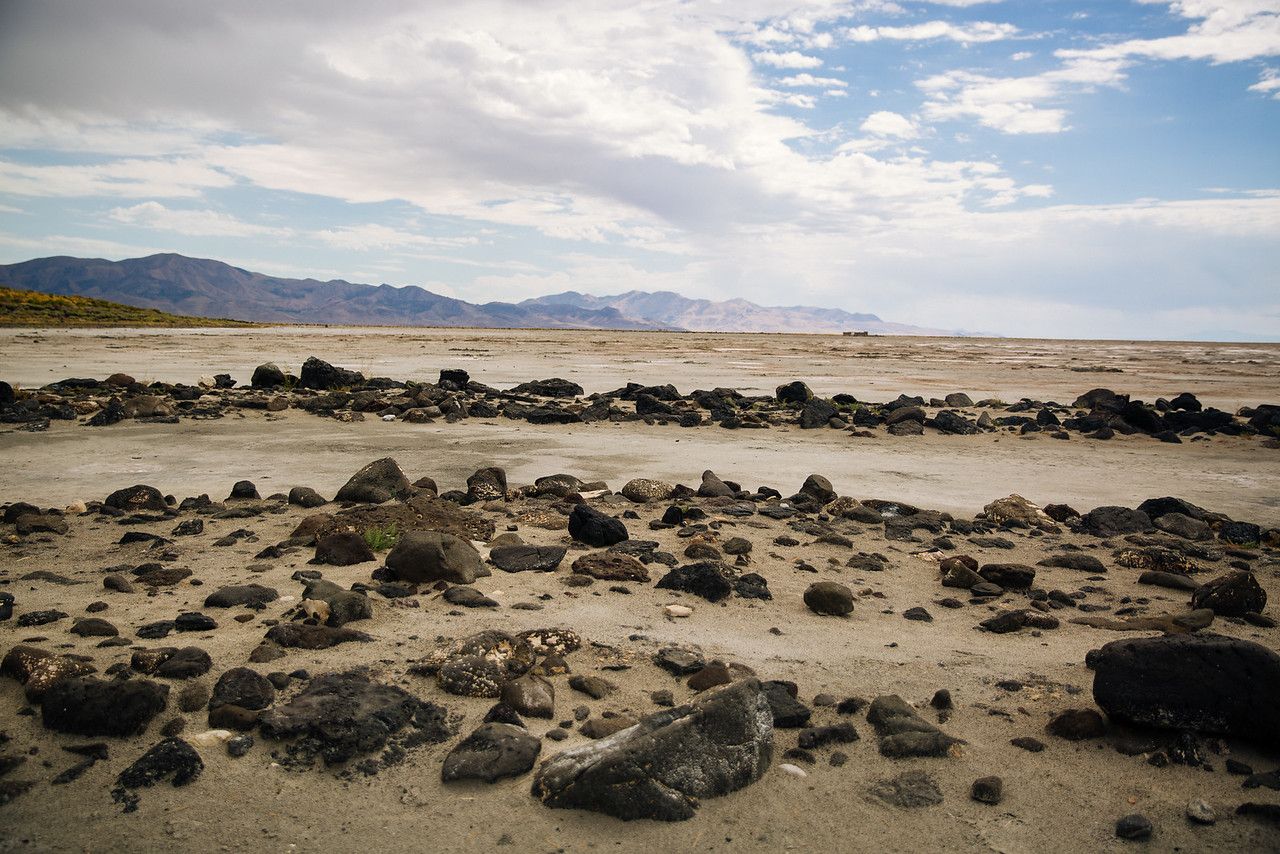
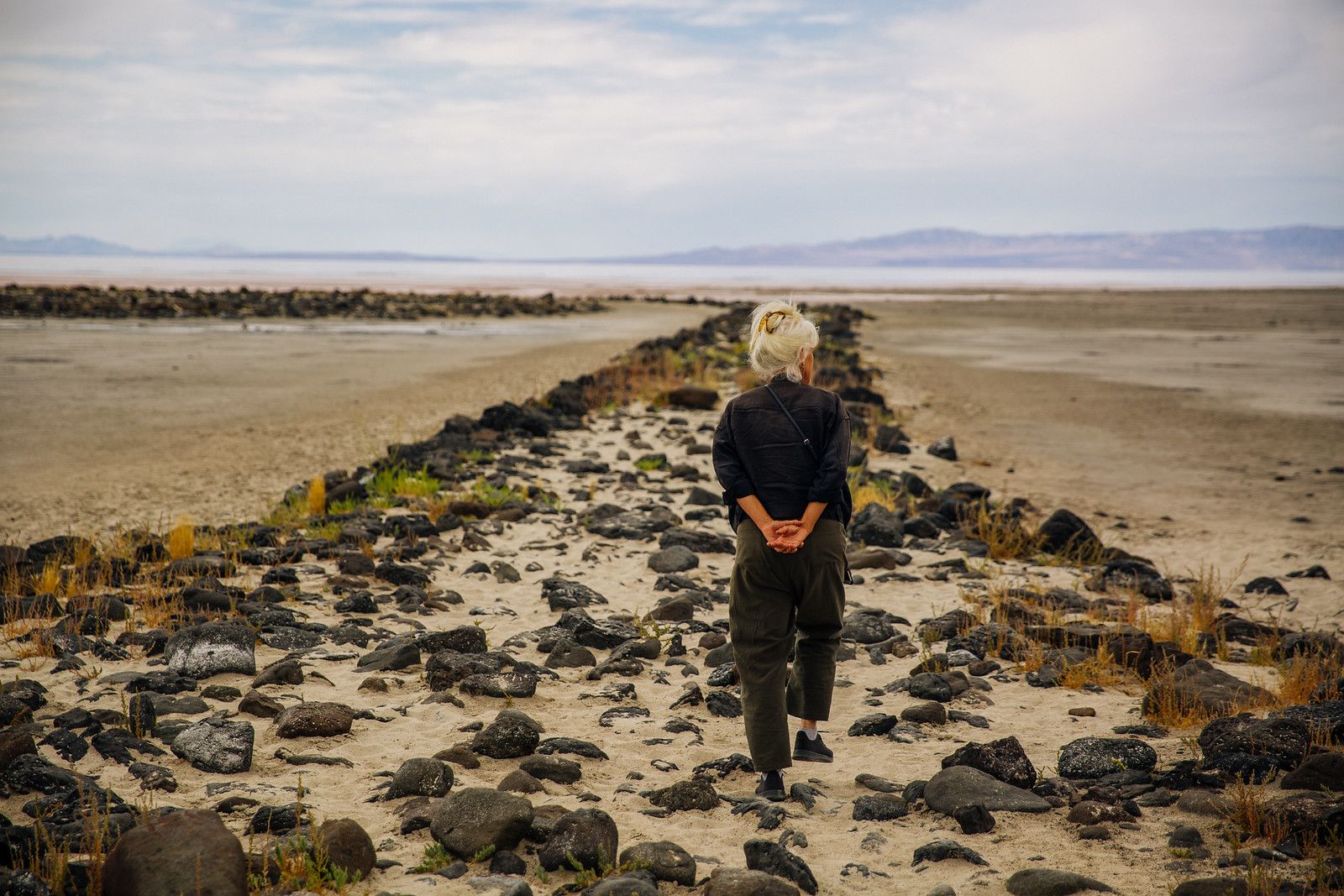
dress in layers
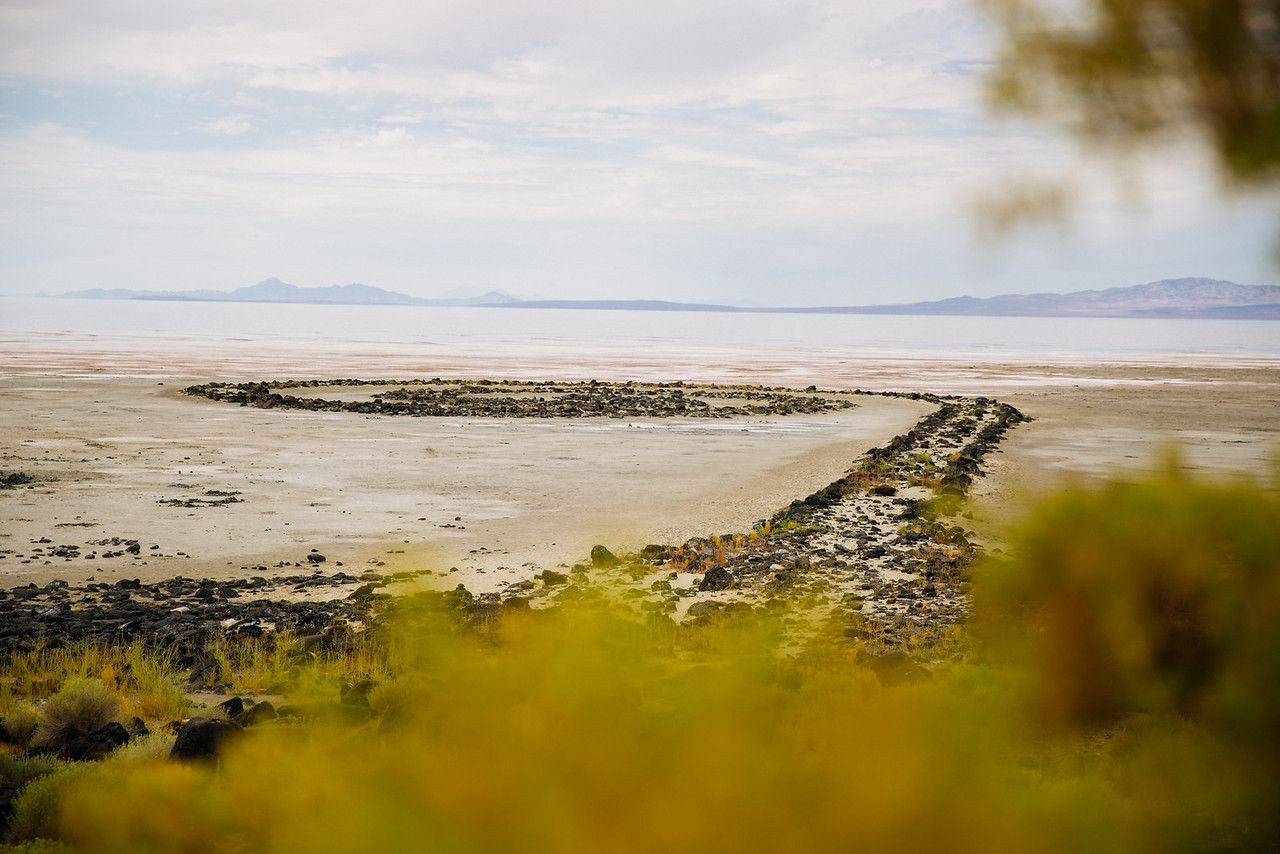
And it was on this surreal landscape, very close to where the transcontinental railroad in 1869 celebrated laying down the last track to unite east and west, a process no doubt streamlined by the decline in the American buffalo population from 60 million in the late 18th century to around a thousand when the golden spike was hammered in place, that Smithson chose to make his spiral jetty in April 1970. Bob Phillips operated the heavy equipment, and patron Virginia Dwan financed the work with a grant of $9,000. I’m still not sure how the rights to the land were worked out, but Utah designated the site as its official state work of land art in 2017.
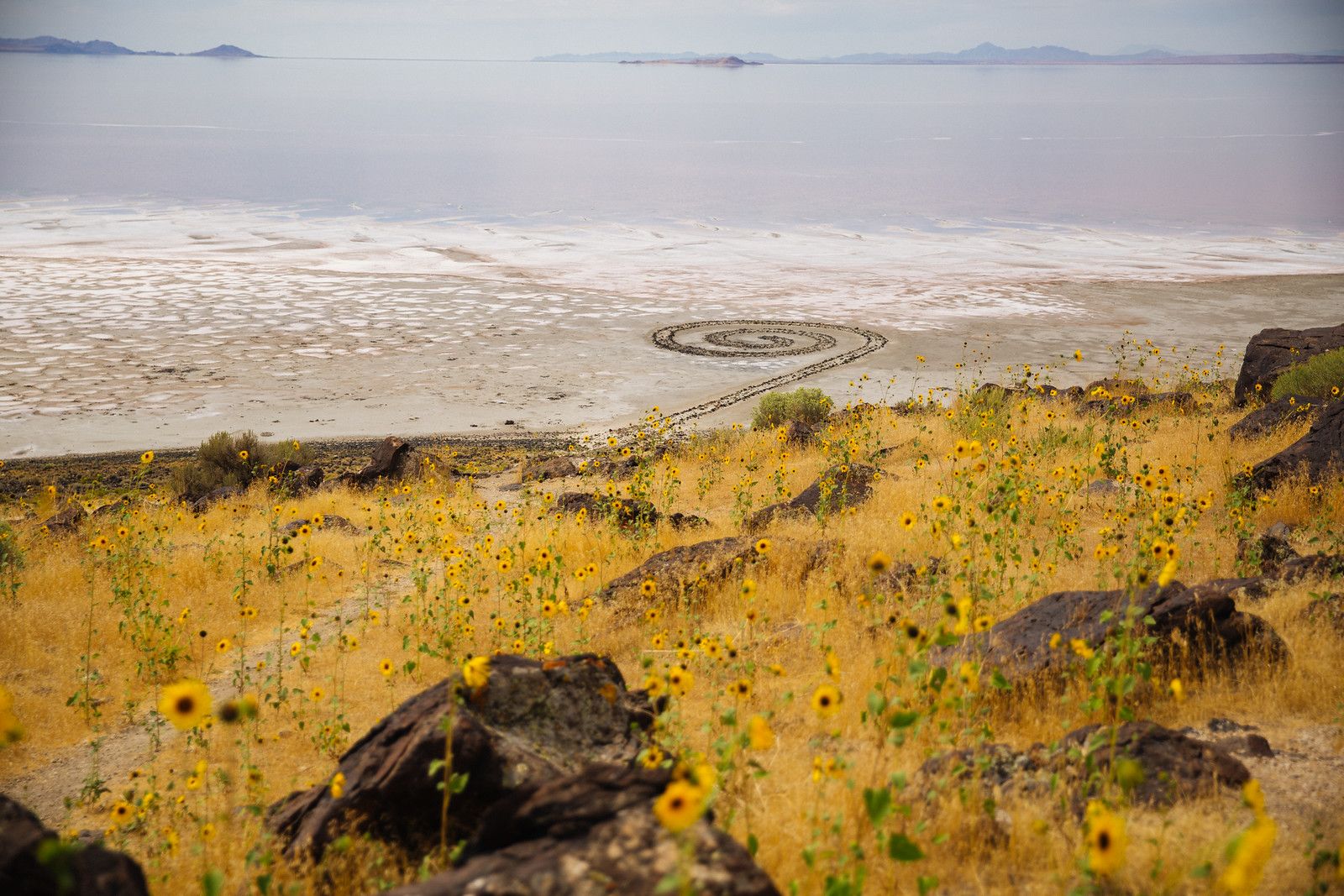
Reading up on the site as we bounced down the washboard road, I found that astronomy had also been one of the protean influences in Smithson’s work as well as, surprisingly, the belief that Frederick Law-Olmstead was America’s first earthwork artist. In the early ’70s the Whitney held an exhibit on the creation of Central Park, and Smithson was able to view the maps, photographs and other documents associated with its creation: “The magnitude of geological change is still with us, just as it was millions of years ago. Olmsted, a great artist who contended with such magnitudes, sets an example which throws a whole new light on American art.”
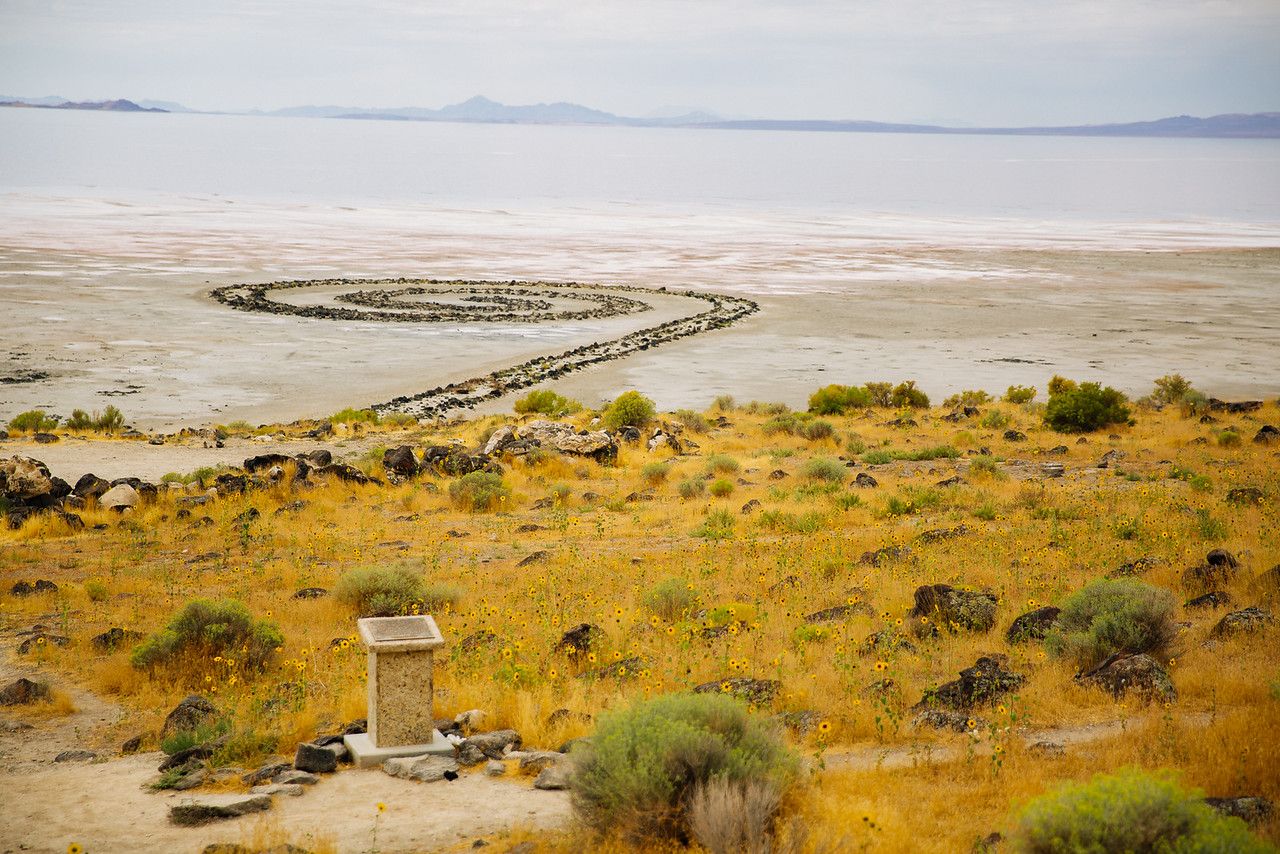
Smithson wanted to get art out of picture frames, out of galleries, and have it become fused in a continuing dialectic with the changing landscape. From his essay on Olmsted: “The picturesque, far from being an inner movement of the mind, is based on real land; it precedes the mind in its material external existence. We cannot take a one-sided view of the landscape in this dialectic. A park can no longer be seen as a ‘thing-in-itself,’ but rather as a process of ongoing relationships existing in a physical region — the park becomes a ‘thing-for-us.'”

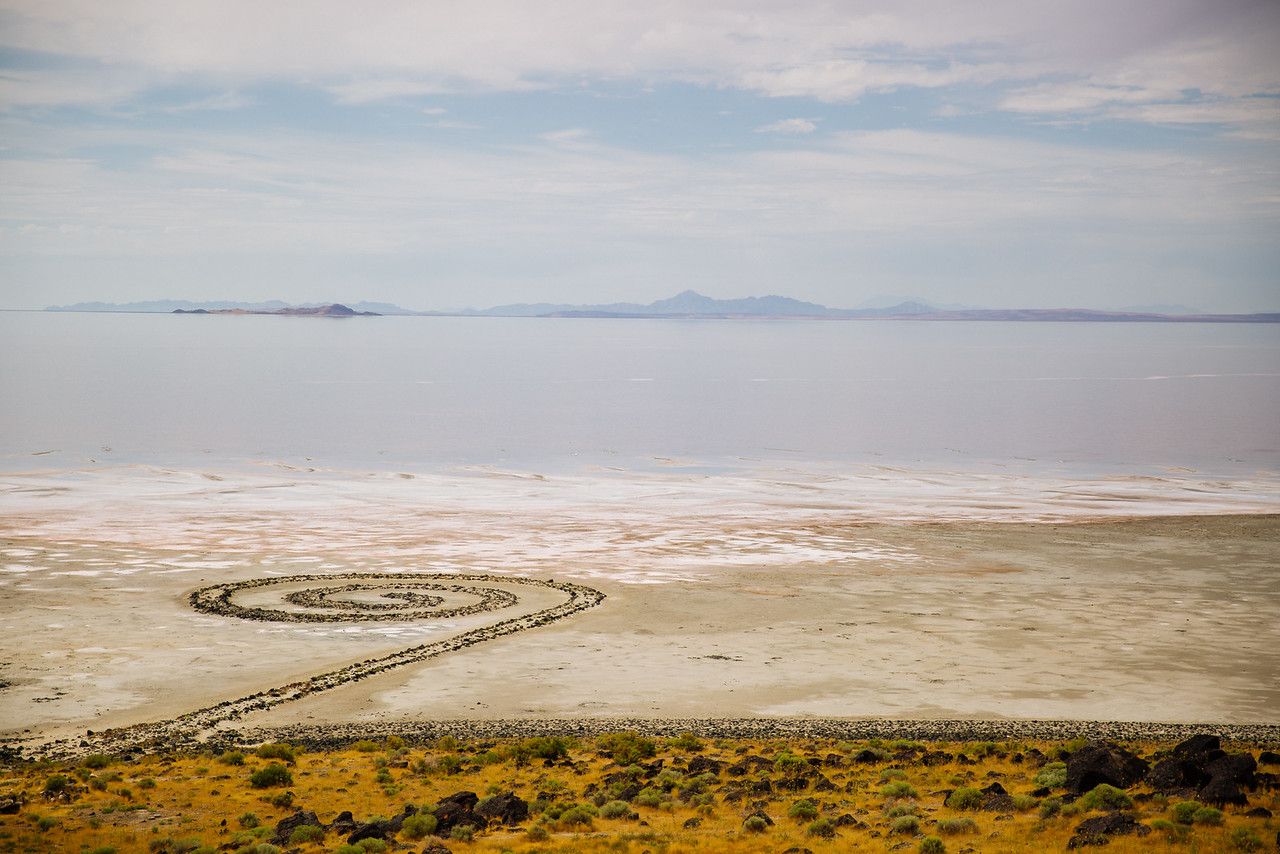
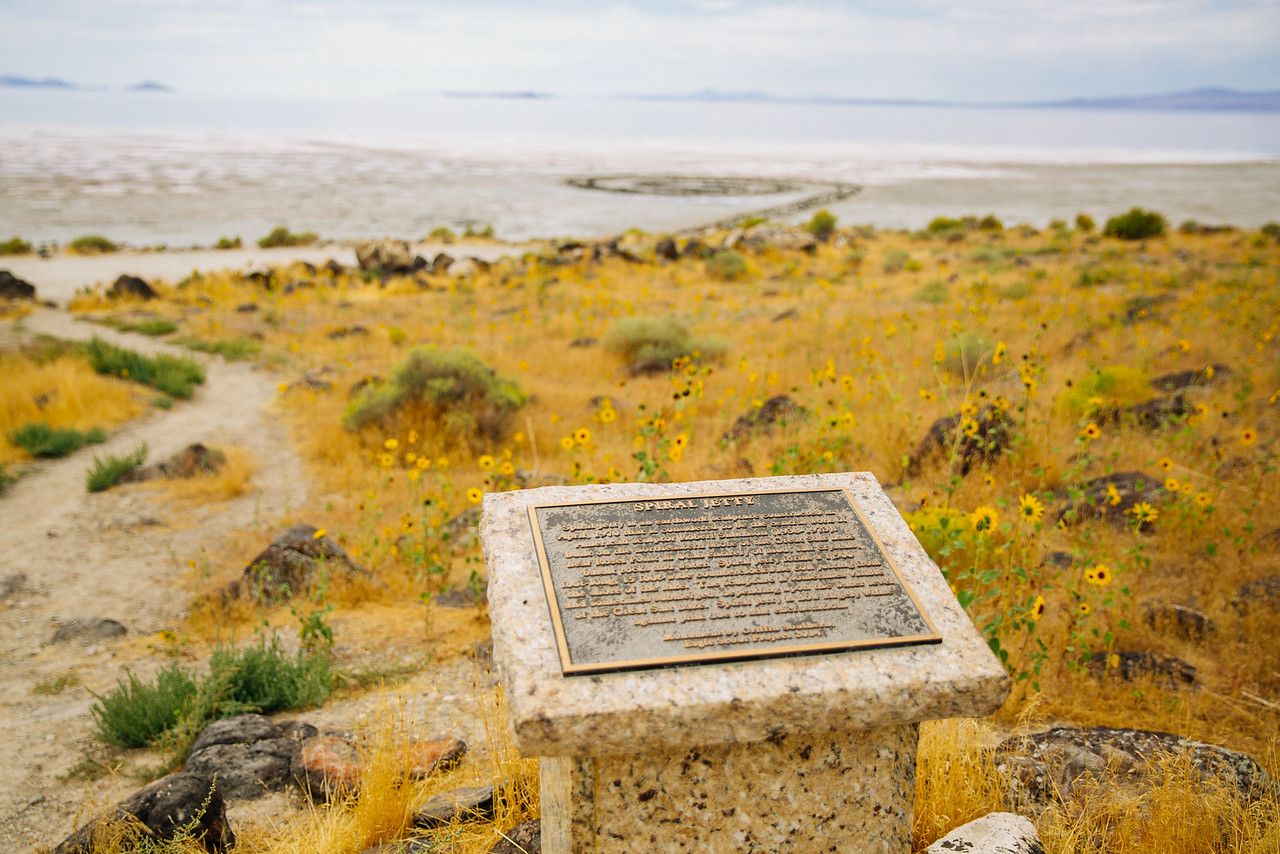
As articulate as Smithson was about his work, its sinuous shape on this ancient lakebed, mysterious as a sphinx, appearing and disappearing with the changing water level, really does defy explanation. Except to say that we are a very strange species indeed.
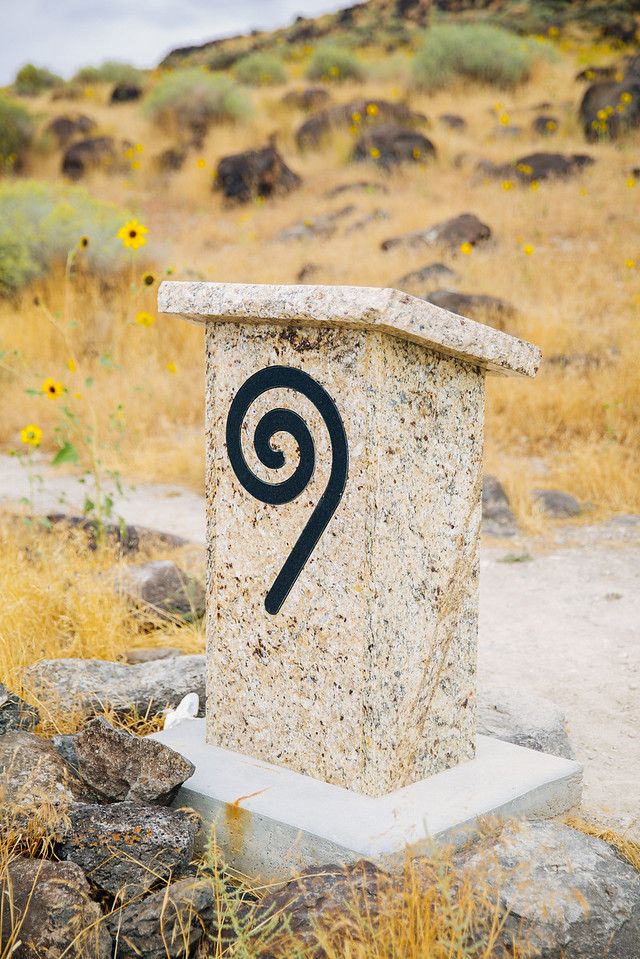
For Mitch’s impressions, you can read an account of the trip he wrote to his uncle, part of which is included here:
“On the way to Park City, we drove far out of our way to the eastern shore of the Great Salt Lake to see the Spiral Jetty. I’ll include some photographs, although the work & the experience of getting out there intentionally defy photography. Thirty miles of washboard road is indescribable. My wrists hurt the next day from the vibrations that came through the steering wheel. And my mother mentioned a favorite story of you in a volkswagen with my father in Mexico over a similar washboard road, cresting a rise where the entire future appeared unpaved to the horizon, when you reportedly lost your mind from the interminable jostling & gunned the engine to fold time, punching the headliner for good measure. This very nearly happened to us. My mother read aloud from Virginia Dwan (the patron of this and most other land art in the Southwest) in Interview Magazine as we drove:
(Virginia Dwan): ‘Certainly for me, even just landing in Albuquerque or Salt Lake City or Las Vegas was immediately part of the experience. And then you’d get in a car from the airport and take these very long trips—in Robert Smithson’s case, it was three hours by car to get to his work. And then there’s walking around and into the piece and seeing it from different angles. The kinetic experience of being a part of it physically was very important for me.’
My mother laughed as she read as if Dwan were narrating our own “very long trip” because we had forgotten to bring water or snacks and had rented a very small front-wheel-drive peashooter of a car which we were undoubtedly damaging as we bottomed out in the deeper mud ruts. We had accidentally created the adversity that would give shape and color to our one experience of Spiral Jetty. Will the car make it? Will we become dehydrated? Can it really be 102 degrees outside? The singular nature of the pilgrimage kept appearing in conversation — bolstering our decision to go as well as lending reverence to the thing once we got there. “When are we ever going to be in Utah again?” was a common refrain when we needed encouragement for the undertaking. And then when it appeared foolish to stand in the sun for even 10 minutes longer staring at the jetty, the encouraging sentiment was, “This is the only time I’ll ever see this.” It makes sense that one could return to Paris to see Notre Dame more than once, so there’s no need to gather up final details as a hedge against mortality. But that is exactly what one feels at the Spiral Jetty. One’s eyes are sharp. How could I ever possibly come out here again?
Behind the jetty is a rise of some ninety meters with a single worn footpath which I climbed to the top. It’s the best place to see the spiral and because there is only one path, I knew I was following Smithson’s footsteps up the rise to where he would look out on his project. His death, younger than I am now, at 34 is woven into the project too, almost as if he sacrificed himself on it. He doesn’t have a third act or even much of a second. The promise of this wild neolithic addition to our human catalog has to stand in for anything he might have done with more time.
When Smithson built the spiral in 1970, the briny waters of the lake were solid pink with algae. After his death, heavy runoff raised the Great Salt Lake over the jetty and it vanished for decades under water. In 2002, the lake evaporated off the basalt rocks and revealed the spiral crusted white with salt crystals. When we are seeing it in 2019, the crystals are gone, the basalt rocks are black again, the receding edge of the Great Salt Lake is easily a mile distant.
We were alone the whole time we were there, salt crystals crunching under our feet. and when I passed over the top of the rise for a few moments with my camera, my mother down on the shoreline lost sight of me and felt alone for 30 miles in every sunbaked direction. I had the keys to the car and it had locked itself earnestly against burglars after we parked. In a few minutes we were back in seatbelts and air conditioning, but everything to do with survival is heightened in the desert and in those moments my mother realized there wasn’t anything tall enough to make shade within walking distance unless she shimmied under the car.”
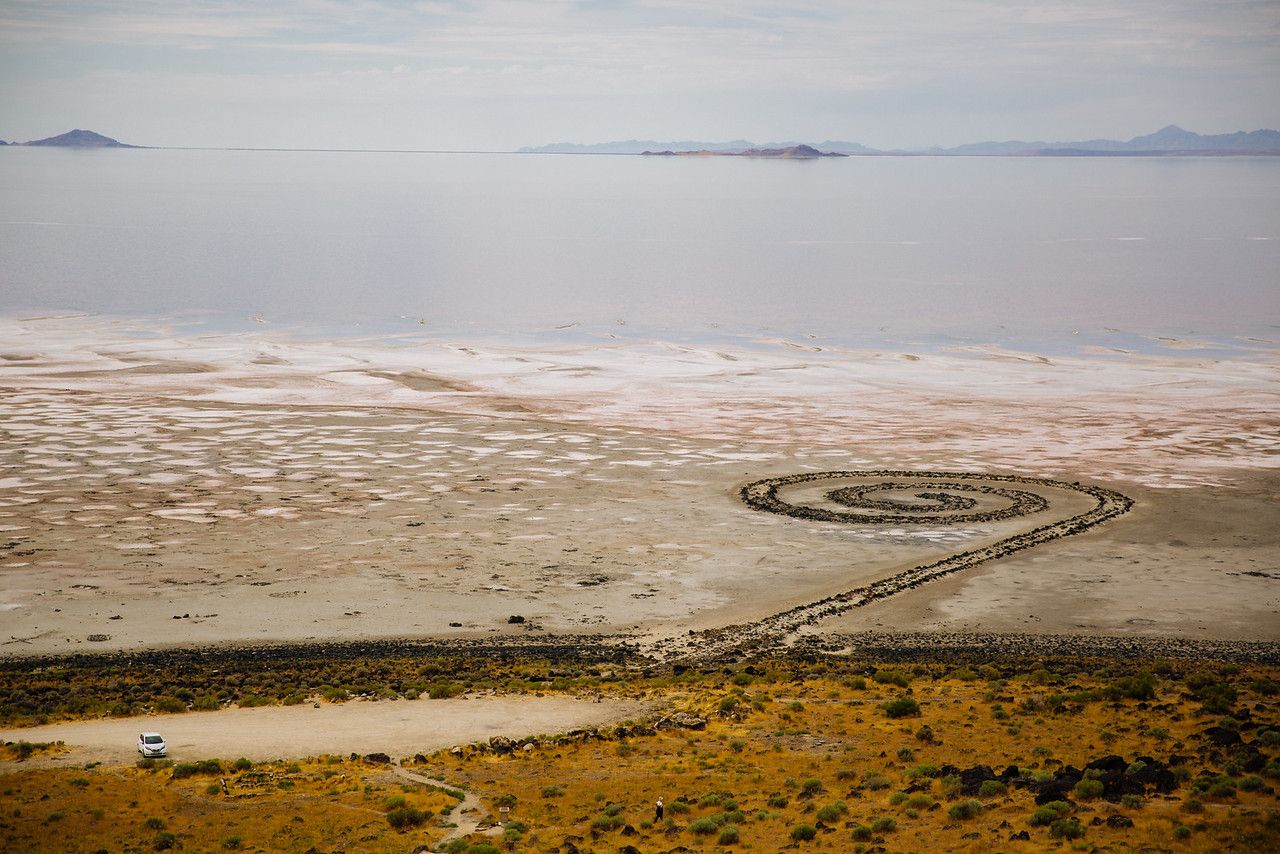
“Pilgrims write their names in the salt bed with sharp stones. I pass an existing scrawl of my own name, strangely. As well as birthday wishes for Harry, love to Sheena, and many invocations to the flow of time. Rupert was here! Alex & Sally forever. The jetty will outlast them all so it’s a reasonable place to piggyback your messages for a decade or two. The spiral is 50 years old next year.”
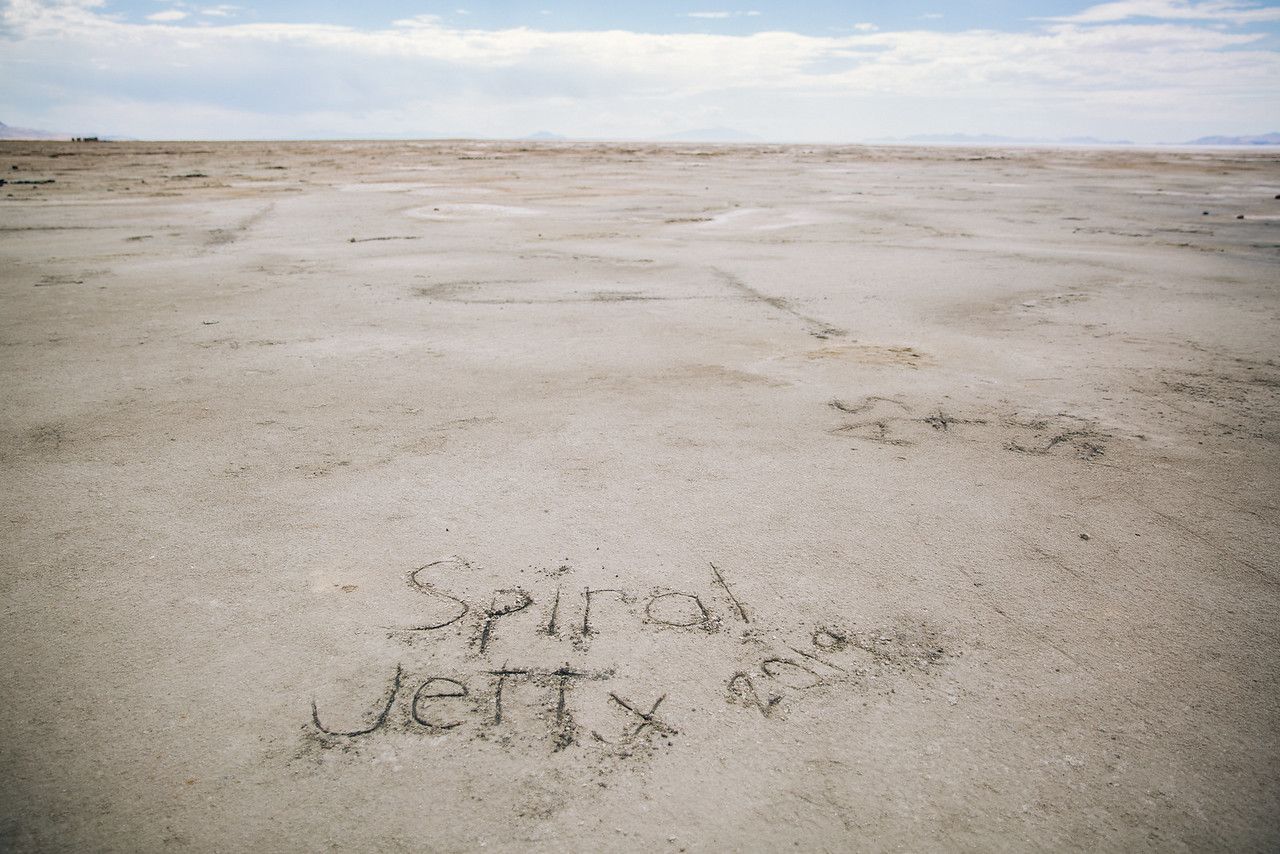
with special thanks to David for pointing us in the right direction.

There is not much to rival those things you will see in the triumvirate of Arizona, Utah and New Mexico. There are reasons people do things like this out in those lands; it’s hard to deny the mystical atmosphere that exists in such places-which feel so endangered to me now. I enjoyed Mitches’ essay very much.
What an adventure you had! As with all true adventures, it involved your minds as much as the physical aspect of getting yourself to and from your destination. I’m not sure I could’ve been enticed by such a trip but I’m glad that you’ve shared your experience here. The landscape is simultaneously desolate, other-worldly, and beautiful, with an aspect of danger, or perhaps just challenge, to add spice. Mitch writes well, as of course you do too.
There are few places where you could feel how desolate, lonely and beautiful this landscape is. Such wild places show how fragile our existence is. Incredible photos and an interesting story to how it evolved. Glad you made it back without incident.
These are the best photos of spiral jetty I’ve seen.
That’s an intense adventure! Thanks to you both, but especially to Mitch for the haunting photos. I hadn’t realized that the jetty was submerged for so long. Getting a little spooked by how many 50th anniversaries are coming around; 1970 was practically yesterday…
Your way of sharing the experience helps us to feel like we were there with you, experiencing the landscape. Thank you! And thanks to Mitch for the fabulous photos.
These are the best pictures I’ve seen of Spiral Jetty.